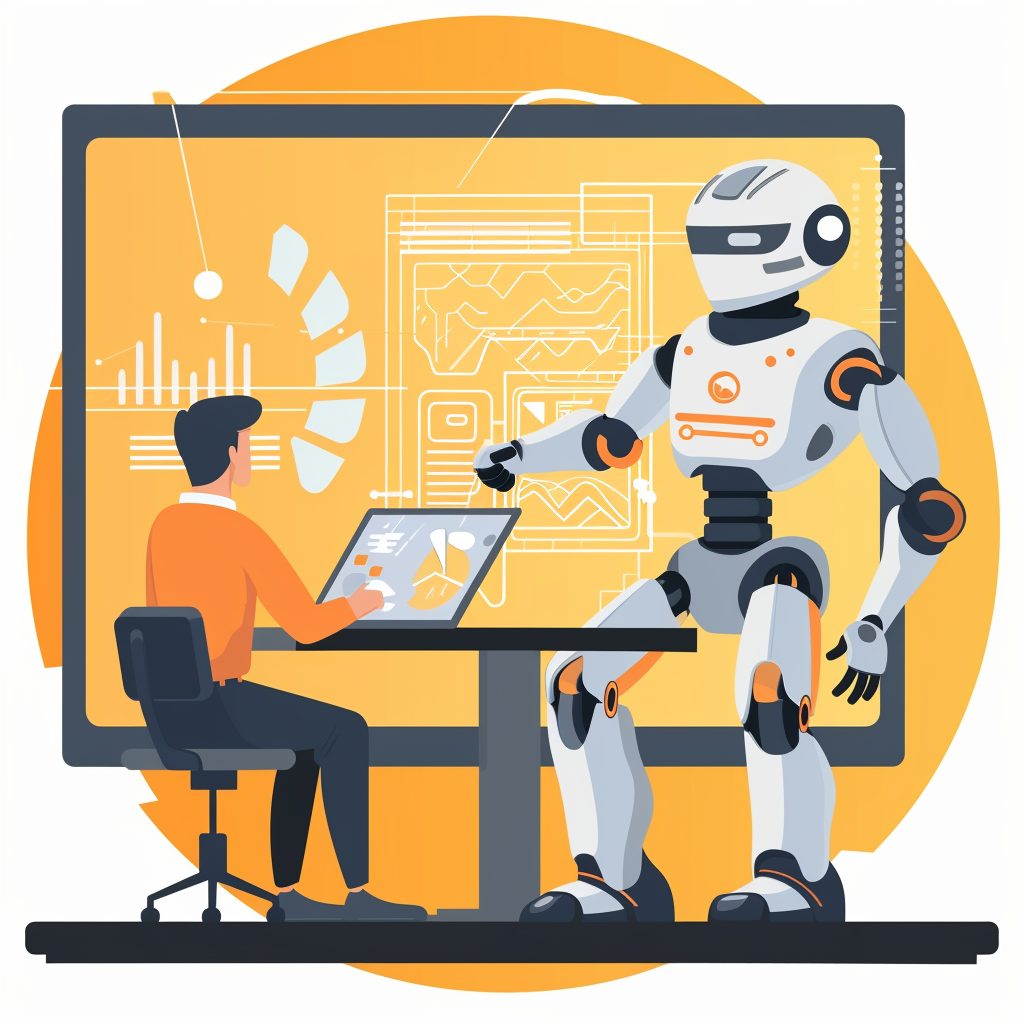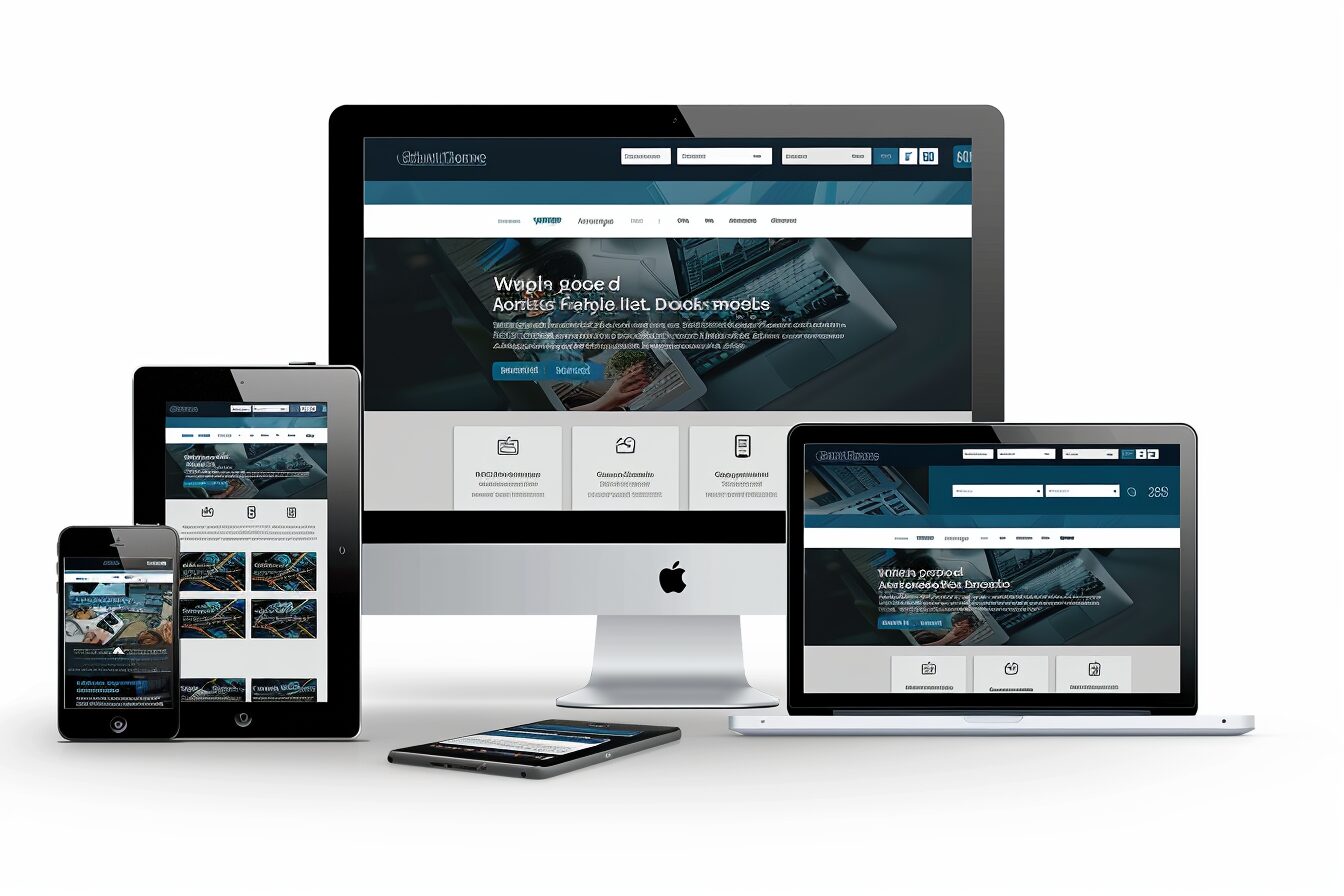Web development is the process of creating and maintaining websites. It involves many aspects, including web design, web content development, server-side scripting, client-side scripting, and database management.
Web developers typically work in teams with other developers and web design professionals. They must communicate effectively with their team members and clients to create successful websites.
One of the essential things web developers need to do to stay on top of industry guidelines is to keep an eye on the trends. These tend to change based on the scope of technology and user expectations, so any developer needs to know what to expect regarding web development guidelines.
Here are some guidelines you can expect in 2023 to help guarantee that your and your client sites adhere to the expected standard.
All-New Technologies Will Take Over the Web Development Industry

All-new technologies will take over the web development industry in the coming years. Here are a few of them:
Artificial Intelligence and Machine Learning
Artificial intelligence and machine learning (AI/ML) will become more commonplace on websites. Some great examples already add value to the user experience, including chatbots and voice search.
Progressive Web Apps (PWA’s)
Progressive Web Apps (PWAs) have proven themselves as powerful tools for creating mobile-first web applications that utilize each platform’s best parts while providing a consistent experience across multiple devices.
They’re also becoming more widely adopted in businesses’ digital strategies as they provide a better user experience than traditional mobile apps without sacrificing performance or security.
Voice Search
Voice search will continue to grow in popularity as people get used to using their voice instead of typing queries into search engines like Google or Bing.
This allows users an alternative method of inputting information rather than using keyboards alone—especially since it can often work faster than typing out queries manually.
This trend is likely due to many factors, such as increased reliance on computers in everyday life coupled with advances made by companies like Amazon, who created Alexa, which provides customers access by asking questions aloud rather than typing anything first.
Accelerated Mobile Pages
Google’s Accelerated Mobile Pages (AMP) is an open-source project that was created to help improve the performance of a web page and web browser on mobile devices. AMP pages load faster than traditional web pages and can be served from Google’s AMP cache.
AMP is a technology that helps you build faster, more secure, and more reliable web experiences.
It’s a way to make your content more accessible to everyone on the web. AMP provides a better user experience for your users and ensures they can access all of your content quickly, easily, and without downloading any heavy files first.
Any site that wants to serve AMP pages must adhere to a few guidelines, such as:
- All AMP pages must be valid AMP documents.
- All resources must be sized statically.
- All JavaScript must be asynchronous.
- No custom fonts are allowed.
- Page layout must not exceed 1 megabyte.
Some of these guidelines may seem daunting, but they are necessary for your pages to be valid AMP pages. Google has provided a few tools to help with this, such as the AMPValidator and the AMP Page Speed Insights tool.
If you’re unsure whether your pages are valid AMP pages, you can use the AMP Validator tool to check. Enter the URL of your page into the device, and it will tell you if the page is valid or not.
Design With Mobile in Mind
Designing for mobile first is a great way to ensure your site looks good on any device. It’s also an essential step in ensuring that your site loads quickly.
Quick page load times are critical because these days, people don’t want to wait five seconds for something to load before they move on with their lives.
With the rising popularity of smartphones and tablets, it’s more important than ever for websites to load quickly—and if they don’t load quickly enough, users will abandon them entirely.
Web Accessibility Initiative
The Web Accessibility Initiative (WAI) is an organization that works to improve accessibility for people with disabilities. They have created a set of Web Content Accessibility Guidelines (WCAG) guidelines.
WCAG guidelines help make web content more accessible to people with disabilities. They cover a wide range of topics, including:
- Making text easy to read and understand.
- Providing alternatives for audio and video content.
- Creating pages that can be used with assistive technologies such as screen readers.
If you want your site to comply with WCAG guidelines, you must ensure that all of your web content meets the guidelines. The WAI has created the WCAG Sampler Tool, which allows you to check individual pages on your site to see if they meet the guidelines.
Progressive Web Apps
What is a PWA?
Progressive Web Apps (PWAs) combine web technologies and native app functionality. They are websites that provide more than just static content like text, images, or videos; they can load fast, work offline, and be added to your home screen like an app.
Tooling and APIs
As a web developer, you’re likely to encounter a variety of tools that can help you accomplish your goals. You may also choose which tool best suits a given task.
It’s essential to consider the following factors when making this decision:
The importance of APIs and tooling in general.
APIs provide access to data and functionality, while tooling allows access to other developers’ code that can be reused as part of your project. Both are essential components of any web development project and will likely change over time as technology evolves.
Which API or set of APIs will give me the functionality I want?
You should consider whether the API supports what you need it to support before using it, especially if there are multiple options available at your disposal (e.g., if one API allows for greater customization but another one does not).
If possible, try out both options to know which one works better based on its feature set alone—not just because someone else told you so.
Security

When it comes to security, the web development team must take into account several factors. They should be aware of how their website can be compromised and how attackers might do so. For example, some common security issues include:
- Cross-site scripting (XSS)
- SQL injection attacks
- Phishing attacks
- Denial-of-service attacks
Focus on Usability and Experience
In web development, it’s essential to focus on usability and user experience. Your website should be easy to use and navigate, responsive across all devices, secure, and fast.
In an age where the user experience is one of the primary things that can make or break a website, this principle is more vital now than ever. All websites are expected to maintain a strong sense of usability, from social media to regular professional websites.
Web Applications Are Going to Get More User-Friendly
Future web applications will be more user-friendly, interactive and engaging. This is because of the rapid evolution of technologies like artificial intelligence (AI) and machine learning.
With AI, you can design a website that adapts according to how your customers use it; for example, if a user visits a specific page often during their first visit, that page would be easy to find in subsequent visits.
In terms of interactivity, there are many possibilities still to come out, such as AR/VR headsets or head-mounted displays that allow users to experience your products or services without leaving the comfort of their homes!
Lastly, when people think about web applications, they don’t usually associate them with being engaging, but this can change too. The more fun features you put into an app – like gamification – will increase engagement levels across all demographics.
Use Modular Approach for Designing
The modular approach is a way to break down a large project into smaller parts. It makes it easier to manage and maintain and helps with reusability and maintenance.
The main benefit of this approach is that it means only one person is responsible for updating all the modules if needed, instead of having multiple developers dealing with various parts of the project separately.
Artificial Intelligence and Machine Learning Will Be the New Normal.
We’re already seeing AI in our everyday lives like when you use Siri or Alexa to order a pizza, call someone on your phone, or get directions. These are just the beginning of how we’ll see artificial intelligence used by web developers and designers in modern web development practices.
AI At the Core
In 2023, many more products and services will be created with AI at their core—and it won’t just be big tech companies leading the charge on this front. Small businesses are also likely to start incorporating artificial intelligence into their offerings for interacting with users.
AI to Benefit Everyday Lives
This will make life easier for everyone involved: users can expect things like ordering food online or booking travel plans online to become faster and more accurate than ever before.
Small businesses have an opportunity to make their brand stand out from competitors by offering something unique (like a chatbot). In contrast, large corporations still have time-saving options through automation software.
Voice search is going to be the next big thing in search engines.
Voice search will be the next big thing in search engine optimization. It’s not just that voice searches are more accurate than text searches but also that they’re easier to use, more natural and accessible for people with disabilities.
Text-to-speech has been around for a while; however, it’s only recently that the technology has become good enough to make voice search possible on mobile devices.
Voice Search Accuracy:
Voice recognition software is getting better all the time—so much so that there’s little difference between accuracy rates of voice and text searches (98% vs 95%).
Natural Language Processing:
A lot of thought goes into natural language processing when building websites today because they want their sites to be easily navigable by people who aren’t tech-savvy. No matter what website you create, a doctor’s office needs its website as easy to navigate as your local deli!
JavaScript Libraries And Frameworks Are Trending Now
JavaScript is a programming language that has become increasingly popular in recent years. It was developed by Netscape Communications Corporation and intended to be used for client-side scripting on web pages.
JavaScript can be used as an individual language and integrated with other languages such as C, C++, Java or Python via JavaScript libraries or frameworks.
JavaScript libraries are used to create reusable code blocks. At the same time, frameworks speed up web application development by handling tasks such as AJAX requests and data binding for you.
This allows developers to focus on customizing their applications instead of on the boilerplate code required for every new project they start working on.
Bonus for Web Designers: Be Sure to Often Review Your Website’s Design and Keep it Up-to-Date.
Be sure to review your website’s design often and keep it up-to-date.
Of course, website designers, like developers, must ensure that they stay on top of current trends and guidelines in the industry. One way to do that is to take the time to review your site design and keep it up-to-date.
If you’re updating an existing design or adding new features (such as a blog), make sure that these changes are consistent with the overall look of the site and don’t detract from its primary message or purpose.
Avoid overdoing things with too many fonts or colours.
Your visitors will appreciate having everything visible without being distracted by too much visual noise—this goes for text and images! Also, avoid using too many fonts; stick with one basic font family throughout most pages (such as Arial). HTML CSS responsive design front end
Don’t be afraid to change your design if needed.
Better yet: get rid of old content altogether if there’s no reason why anyone would want to see it anymore–this can help make room for new stuff!
Web Development and Web Design is Likely to Experience Several Changes Moving Forward
Moving forward, web development is likely to experience several changes. AMP, PWAs and security are all likely to be necessary. JavaScript libraries and frameworks are trending now, whereas designers must keep up with new technologies like CSS variables.
To stay on top of the latest trends in web design and development, you need more than just a good knowledge of HTML5 and CSS3 – you also need an understanding of JavaScript libraries such as React or AngularJS.
Conclusion
Web development is vital in today’s world and continues to evolve rapidly. As a professional, it’s essential to keep the industry’s best practices in mind, whether you are a seasoned professional or even a website design professional.
The future of the Internet is bright, with new features and options on the horizon that will make our lives easier and more enjoyable. With all this in mind, you should be better prepared to understand what’s coming down the pike for web developers in 2023.











